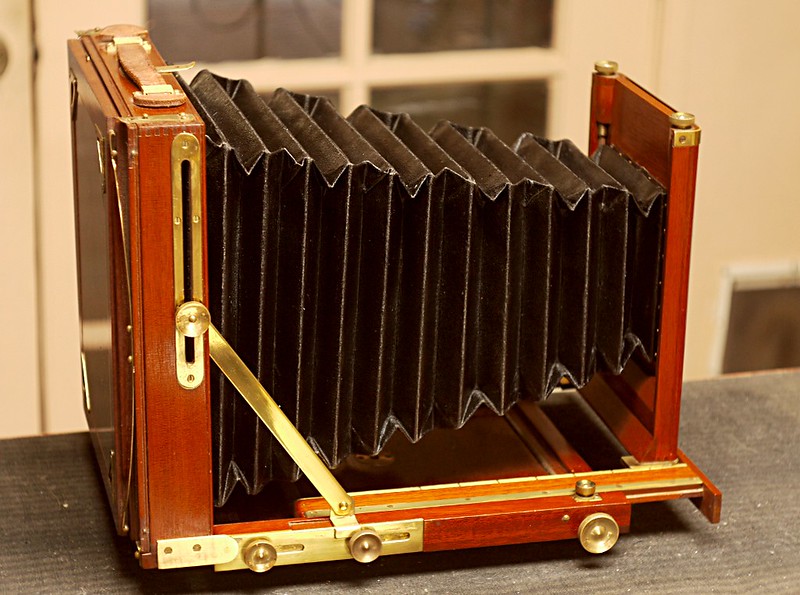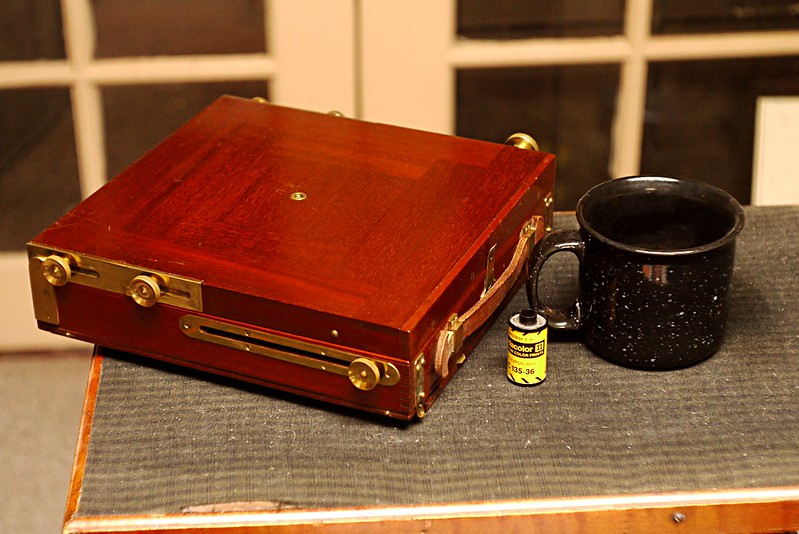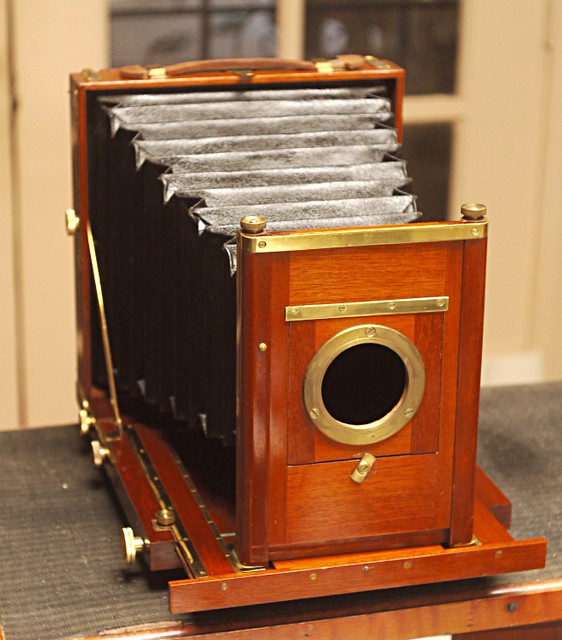I am very pleased with this 1890s Rochester Optical Company Universal I just got. Though large field and studio cameras with sturdy, kitchen table leg standards are what most wetplaters look for, there is something about the refined size and quality of the dryplate era. This one is in wholeplate size, 6 1/2 X 8 1/2, which I'm sure will be a challenge compared to the 5x7 and 8x10 I usually shoot with film. It came complete with 2 dryplate holders in a nice canvas hard case.
After handling and owning several English cameras, I've come to notice they often nicer than the average American camera from the 1860-1880 period. Their wood is spectacular, their brass is inletted, The screws are all aligned. A typical American tailboard camera from the wetplate era has a frontier primitive look. But starting in the late 1880s, Rochester, Century, and a few others began to create some pretty nice competition. The mahogany on a high end Rochester or Century is top quality, as is it's finish. This Universal is an American take on the English style camera. It folds up very small, just a couple inches thick. It has a lot of bellows, rear tilt and front rise, and a 4" lensboard. It feels secure and substantial, with all that mahogany and heavy brass.
The condition is fantastic, you really have to hold it to appreciate the beautiful polish on that exotic wood. I'm going to try to shoot it this weekend.








 Reply With Quote
Reply With Quote
Bookmarks